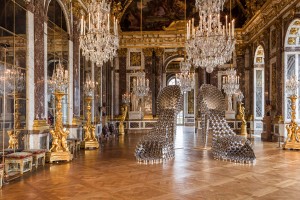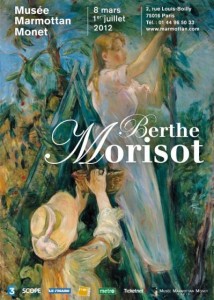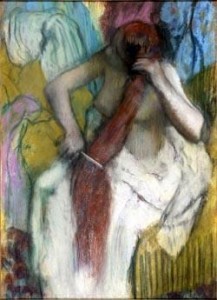A selection of exhibitions for the summer
Joana Vasconcelos, Château de Versailles

(19th June to 30th September), closed on Mondays
www.chateaudeversailles.fr
This year, it is Joana Vasconcelos’ turn to be the face of contemporary art at Versailles, after Jeff Koons, Takashi Murakami, Xavier Veilhan and Bernar Venet.
The work of this artist, who is taking over the mythical areas of the Château de Versailles and its gardens, is both exuberant and sophisticated. She has created monumental pieces, specially designed with quite astonishing materials: fabrics, plastic cutlery, an engine, steel pans and lids, crochet lace, feathers… taking everyday objects and transforming them with creativity and humour.
Berthe Morisot (1841-1895), Marmottan Monet Museum

(8th March – 29th July), 2 rue Louis Boilly, 16th arrondissement, Tel. +331 44 96 50 33, Underground: La Muette, closed on Mondays
www.marmottan.com
This is the first retrospective of Berthe Morisot, the renowned female impressionist and muse of Edouard Manet, who painted images of childhood and gentle rural landscapes.
Our view : It offers the opportunity to discover or rediscover the museum’s permanent collections, the works by Monet, but also a fabulous collection of furniture and Empire objets d’art within a magnificent private mansion.
Degas et le nu, Orsay Museum
 ((13th March – 1st July 2012), 1 rue de la Légion d’Honneur, 7th arrondissement,
((13th March – 1st July 2012), 1 rue de la Légion d’Honneur, 7th arrondissement,
Underground: Concorde, then take the underground passage and the footbridge from the Tuileries, closed on Mondays
www.musee-orsay.fr
Our view : This very beautiful exhibition highlights Degas’ modern side, stemming in particular from the range of techniques employed, and the influence he exerted on his contemporaries.
It is important to bear in mind that creations are linked to the techniques employed.
An artist does not create the same type of work with oil on canvas as with watercolour for example, photographers are always searching for new framings, engraving allows an artist to play with shadows and full and empty space. Degas often used monotype, which has the advantage of leaving traces of the paper grain which can be used in the creation. This encouraged him to work on blurred, hazy effects, which he used in pastels and then rendered in oil on canvas to produce paintings which were very modern for their era, and even today.




